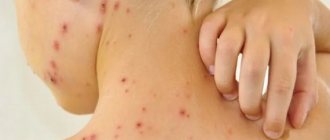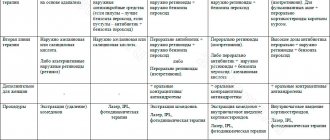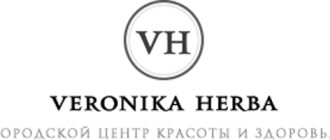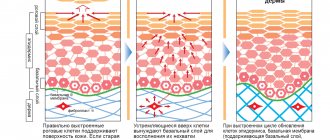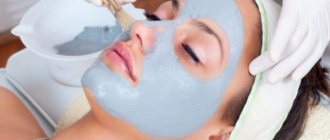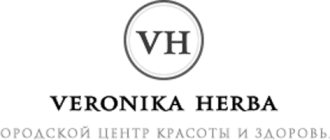December 5, 2020
Most infections are caused by streptococci and staphylococci. They live in the environment, inhabiting the skin, mucous membranes of the mouth, nose, and genitals. In 9–12% of cases, inflammation is provoked by corynebacteria, leprosy bacilli, tuberculosis, and campylobacter.
Healthy skin keeps germs out. This is prevented by the structure of the epidermis, the pH of sweat and sebum, and the antiseptic properties of the secretion of the sebaceous glands. When protection is violated, pustular rashes occur.
Superficial bacterial skin infections
Folliculitis
- inflammation of the hair follicle: abscess around the hair, redness of the surrounding area.
Pemphigus of newborns
- a severe contagious disease when inflammatory blisters cover the baby’s entire body, forming crusts and ulcers.
Impetigo
- against the background of redness, painless blisters with cloudy contents appear. Then the blisters shrink to yellowish crusts, leaving erosions.
Impetigo often occurs in children and young women. Localization: face, under the hair of the head, limbs. When staphylococcus attaches, the crusts become greenish or bloody. The disease spreads quickly in communities. If you suspect it, you need to isolate the child and bandage the wound.
Bacterial infection of the deep layer of skin
Occurs when microbes enter deep into the dermis.
Furuncle
First, a painful node appears, then an abscess matures in its center. After 5–7 days it opens, a purulent-necrotic core is released, and the wound is scarred. When there is more than one lesion, they speak of furunculosis.
Carbuncle
These are several boils united into a common infiltrate. The place looks like a purple-bluish tumor. Pain increases, well-being suffers, body temperature rises. After opening the formation, a deep ulcer remains, healing with a scar.
Acne (blackheads)
- inflammation of the sebaceous gland ducts due to blockage. Pustules form on the face, chest, and shoulders. Their contents dry out to crusts, after which, when rejected, scars or bluish spots remain.
Hidradenitis
Purulent inflammation of the sweat glands. The process often recurs. Favorite localizations are armpits, inguinal folds, under the mammary glands. Deep painful nodes appear, bluish-red on the outside. They are opened with the separation of liquid pus.
Erysipelas
Occurs in people who are individually predisposed. Foci of inflammation are clearly limited. The affected area is swollen, hot, bright red, with bursting blisters. The disease is accompanied by fever, intoxication, and severe pain.
Deep pyoderma can be complicated by inflammation of the lymphatic vessels and nodes, abscess, and sepsis.
Types and phases of wound healing
Nature has endowed the human body with many unique features. These include a protective mechanism that is triggered immediately after an injury occurs. At the same time, the body, with equal diligence, “throws” its strength into healing a minor abrasion or a deep cut. But in some cases such protection may not be enough. Then many years of human experience and medical achievements come to the rescue.
To minimize the time until the epidermis completely heals, it is important to use the medications prescribed by your doctor. If the wound was deep or extensive, then it makes sense to use anti-scar ointments and creams after the injured area has healed.
As already mentioned, a wound is damage to the epidermis. Its healing takes place in several stages:
- Elementary.
- Crust formation.
- Epithelization.
- The abrasion mark stage.
The surface of the injured tissue is still moist, but gradually begins to dry out. It is located slightly below the level of healthy skin.
This stage begins after a few days. Its duration ranges from two to four days. On the first day, the scab is located at the same level as the skin, but then rises slightly above it.
The resulting scab dries out more and more, and its edges gradually rise. After a week or a little more, the crust disappears. It is important not to rip it off yourself, as this will lead to new injury, the formation of a second scab and scar in the future.
After the crust falls off, a light pink stain remains in its place. This is a new thin skin. It will return to normal color in a month.
All healing times listed above are approximate. They can be shorter or longer. It depends on where exactly the wound is located, how large it is, and also on whether it has become infected. An important role is played by the age and state of immunity of the victim, and possible concomitant diseases.
Diseases that affect wound healing
If correct and timely first aid was provided for an injury, it heals fairly quickly and does not cause any unpleasant consequences. But there are other situations when even a small abrasion does not heal for a long time. The skin looks inflamed and swollen. When touched, the affected area causes discomfort. Blood, pus, or ichor may be released. Such problems can be caused by various diseases:
- diabetes;
- malignant tumors and oncology;
- eczema;
- psoriasis and other dermatological problems.
There are research results that healing agents do not have the necessary effect if the victim’s hemoglobin is greatly reduced. Also, wounds can heal slowly due to various viral or infectious diseases, poor nutrition and exhaustion.
Features of facial skin infections
The blood supply to the organs of the head, face, and membranes of the brain is closely connected. Incorrect treatment and squeezing of pimples is dangerous due to the spread of bacteria through the blood and lymph. You can achieve an increase in the area of the affected area, such dangerous complications as meningitis, abscesses and phlegmon, and inflammation of the eyes.
Before deciding on cosmetic procedures - cleansing, peeling, mesotherapy - undergo an examination by a dermatologist to determine the cause of the pustular rash and receive treatment.
Treatment of bacterial skin infections
It should start from the early stages and be carried out under the supervision of a specialist. In some cases, local treatment with antibacterial ointments and wiping with antiseptics is sufficient. Widespread rashes, deep pyoderma, require the prescription of systemic antibiotics. In chronic cases, the doctor may recommend autohemotherapy and immune drugs.
Surgical treatment is carried out if the abscess does not open on its own or if a rough scar must be avoided. Laser coagulation and physiotherapy are used to restore tissue.
It is important to identify and treat concomitant diseases, eliminate adverse external effects on the skin, and select nutrition.
Treatment and treatment of wounds
After an injury, first aid must be provided as soon as possible. The sooner this is done, the lower the likelihood that bacteria will enter the wound. If it is shallow, then you need to:
- wash the abrasion with antibacterial soap and boiled water;
- blot with a clean napkin;
- treat the wound itself with peroxide, and the skin around it with antiseptic agents;
- dry the damaged surface and apply healing ointment or cream;
- apply a sterile bandage or stick a patch if the abrasion is small.
If the wound does not heal for a long time and continues to bother you, then you should consult a doctor. He may prescribe you a course of antibiotics to get rid of the inflammation. Under no circumstances should you self-prescribe such serious medications. In some cases, the doctor may order a series of tests to find out exactly what is causing the wound to heal poorly.
To speed up tissue regeneration, do not ignore medical recommendations. Use healing creams, antiseptics, change the bandage on time, do not overexert yourself and get plenty of rest.
It is important to choose the right antiseptic agents. How quickly the healing goes depends on them. Without antiseptics, pathogenic microflora may develop in the wound, pus may appear, and complications may arise.
One of the most popular and effective antiseptics is Rivanol. Its antiseptic properties have been known for a long time. The main active ingredient in the composition is ethacridine lactate. This is a yellow crystalline powder, which was often used in pre-revolutionary pharmacies. Antiseptic powders, tablets, and ointments were prepared from it by dissolving the powder in the required concentration.
Rivanol accelerates skin healing and also relieves itching, redness and swelling. It dries out wet areas. Regeneration of the epidermis occurs faster. The great advantage of the product is that it can be used on any area of the skin, including mucous membranes. It does not bake when applied, therefore it is widely used in dentistry, gynecology and urology. Another advantage of Rivanol is that it has practically no contraindications, except for the individual reactions of the body. The product is not washed out with water, which means it is much more effective than analogues such as miramistin and chlorhexidine.
When using Rivanol, it is important to remember that it turns the skin a bright yellow color. During treatment, it is better to avoid wearing light-colored clothes.
Features of wound healing on the face
Those who have received an abrasion or wound in the facial area are in a hurry to disguise it with the help of foundation, without waiting for it to completely heal. Experts do not recommend doing this.
Correctors and powder can negatively affect the healing process, as they contain components that prevent wounds from healing naturally. You can apply foundation only when a dried scab appears on the wound.
Possible complications
The risk of complications is directly proportional to how deep and extensive the wound was. The most common problem that occurs after receiving a wound is the development of purulent-septic lesions. Most often they appear due to poor quality processing or a rusty metal object that caused the injury. Therefore, it is very important to contact a medical facility at the first symptoms of inflammation.
Poor circulation also poses a threat. This happens when an injured area of the body is pressed for a long time to stop the bleeding. Necrosis of soft tissues is possible. If particles of earth get into the wound, this in some cases leads to tetanus.
Severe complications are caused by bites. The animal's saliva enters the wound, and along with it microorganisms that begin to actively multiply. Severe inflammation appears. Moreover, an animal bite can cause rabies.
Prevention
Observe the following rules:
- After visiting the gym, wipe the areas that came into contact with the equipment with an antiseptic.
- Treat cuts and wounds with antibacterial drugs (iodine, salicylic alcohol, hydrogen peroxide) immediately after they occur.
- Do not share hygiene items or cosmetics with other people.
- Places of abscesses and impetigo should not be washed with water, combed, or pressed.
- Avoid spicy fatty foods and sweets.
Make an appointment with a dermatologist on time.
The doctor will help you identify the cause of the inflammation, do the necessary tests, and select a treatment that suits the type and stage of pyoderma. December 5, 2020
Author of the article: dermatologist Mak Vladimir Fedorovich
Effective ways to treat scars
Scars and scars are treated in different ways. The specific type of treatment is selected by the doctor depending on the cause, the patient’s condition, concomitant diseases and other factors. The main methods of therapy are:
- Special creams - for example, Imoferase, Dermatix, Naftaderm, Contractubex, Clofibraza, Narbiril and others.
- Chemical peeling - this method is used in cases where treatment with ointments is ineffective.
- Introduction of dermal fillers based on hyaluronic acid or collagen. These components not only smooth the surface of the skin, but also activate collagen synthesis by the body itself.
- Laser therapy can eliminate the most noticeable scars. They are destroyed under the influence of laser radiation, as a result of which collagen synthesis also increases.
- Surgery is indicated in extreme cases when scar tissue needs to be removed. It is possible to transplant a small part of the skin or dermotension.

